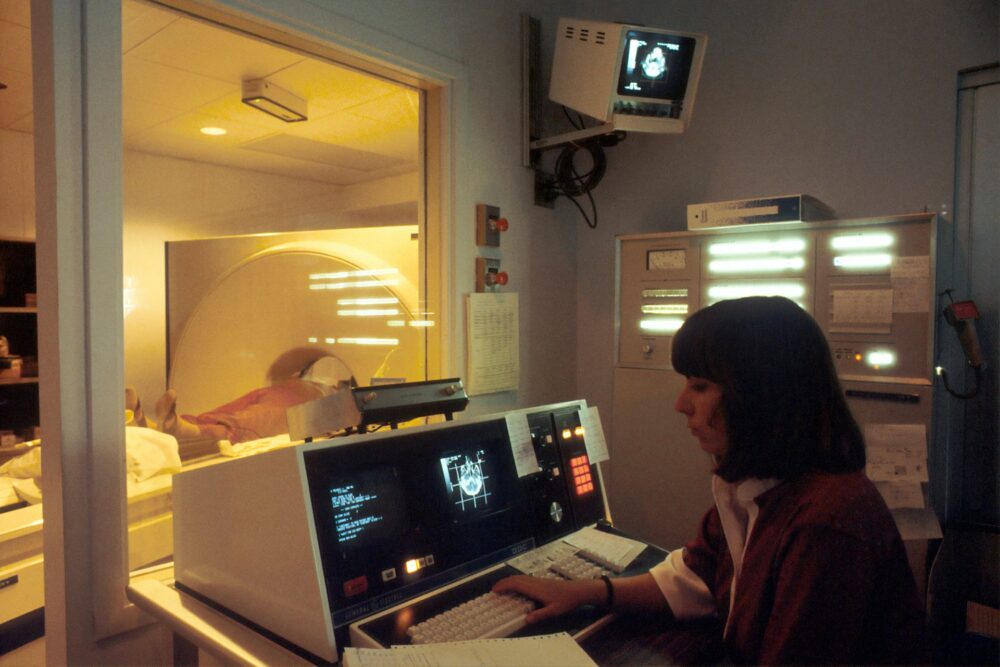Biotech
High-Resolution Diagnostics: 4K Medical Images to Reach 2.31 Billion by 2032
The global 4K medical imaging market is projected to reach $2.37 billion by 2032, driven by a 10.44% CAGR. Growth is fueled by rising chronic diseases, aging populations, and demand for minimally invasive surgeries requiring high-resolution imaging. Companies like Medtronic, Sony, and Zimmer Biomet are advancing this technology, improving diagnostics, outcomes, and reducing healthcare costs.

Medicine is moving towards higher-resolution images. In an era where engineering and technology are at the service of healthcare, the global market for 4K medical images is gaining momentum with a forecast of generating around $2.37 billion by 2032. This is according to the latest report on the sector prepared by Research And Markets, which highlights the advances of companies such as Medtronic, Sony, Hitachi or Zimmer Biomet.
Specifically, the 4K medical imaging business is projected to witness a compound annual growth rate (CAGR) of 10.44% over the period from 2024 to 2032. In 2023, the industry will generate revenue of $971 million .
According to the consultancy firm, the main reason why the sector is growing so quickly is the increase in chronic diseases such as cancer or cardiovascular diseases, which require accurate diagnosis through imaging.
Another important reason driving growth is the shift in customer desire for minimally invasive surgeries , which also require high-quality imaging systems to guide the procedures as they carry a lower risk of complications and recovery periods are typically quicker.
The aging of the world’s population, the increase in chronic diseases or non-invasive surgeries will lead to the increase in 4K medical images
Added to these factors, the aging of the world’s population will also require a healthcare system prepared to handle more consultations, treatments and surgeries. By 2050, the number of people over 60 years old worldwide will triple, according to forecasts by the United Nations (UN). The enhanced imaging capabilities of 4K technology are especially useful in the treatment of diseases that affect the elderly population, as they offer comprehensive images that improve the accuracy of diagnosis and therapy recommendations.
In turn, 4K technology is expected to be used more frequently in healthcare settings, as it has the potential to improve patient outcomes and reduce healthcare costs.
This last point will also significantly influence the growth of the 4K medical imaging business. In recent years, there has been a huge investment in cutting-edge medical technologies that help improve treatments, shorten times and reduce costs.
These types of images improve diagnostic accuracy and speed up more complex operations, so investing in 4K imaging not only benefits medical professionals, but also meets the growing demand for enhanced imaging technology driven by rising patient expectations and increasingly complex medical circumstances.
Zimmer Biomet, Medtronic and Conmed are some of the technology companies that will drive the rise of 4K medical images over the next decade
Among the companies that are moving forward with this technology are tech giants and others specializing in innovative tools for the healthcare sector. According to the report, the United States is positioned as the leading market for 4K medical images, due to the country’s technological accessibility and the increase in chronic diseases.
Technology giants such as Sony and Hitachi will contribute much of the growth forecast for the sector until 2032, as well as companies specialising in healthcare technology such as Conmed, Zimmer Biomet, Medtronic, Srtyker and Smith&Nephew.
__
(Featured image by National Cancer Institute via Unsplash)
DISCLAIMER: This article was written by a third party contributor and does not reflect the opinion of Born2Invest, its management, staff or its associates. Please review our disclaimer for more information.
This article may include forward-looking statements. These forward-looking statements generally are identified by the words “believe,” “project,” “estimate,” “become,” “plan,” “will,” and similar expressions. These forward-looking statements involve known and unknown risks as well as uncertainties, including those discussed in the following cautionary statements and elsewhere in this article and on this site. Although the Company may believe that its expectations are based on reasonable assumptions, the actual results that the Company may achieve may differ materially from any forward-looking statements, which reflect the opinions of the management of the Company only as of the date hereof. Additionally, please make sure to read these important disclosures.
First published in PlantaDoce. A third-party contributor translated and adapted the article from the original. In case of discrepancy, the original will prevail.
Although we made reasonable efforts to provide accurate translations, some parts may be incorrect. Born2Invest assumes no responsibility for errors, omissions or ambiguities in the translations provided on this website. Any person or entity relying on translated content does so at their own risk. Born2Invest is not responsible for losses caused by such reliance on the accuracy or reliability of translated information. If you wish to report an error or inaccuracy in the translation, we encourage you to contact us

-

 Markets5 days ago
Markets5 days agoPrecious Metals Surge While Major Indexes Hold Strong Amid Holiday Lull
-

 Markets2 weeks ago
Markets2 weeks agoFed Divisions Signal a Potential Economic Turning Point
-

 Biotech3 days ago
Biotech3 days agoEFPIA Calls for Clearer AI Governance to Safely Transform Drug Development
-

 Africa1 week ago
Africa1 week agoMorocco Emerges as Key Fertilizer Supplier as Brazil’s Reliance Grows

























